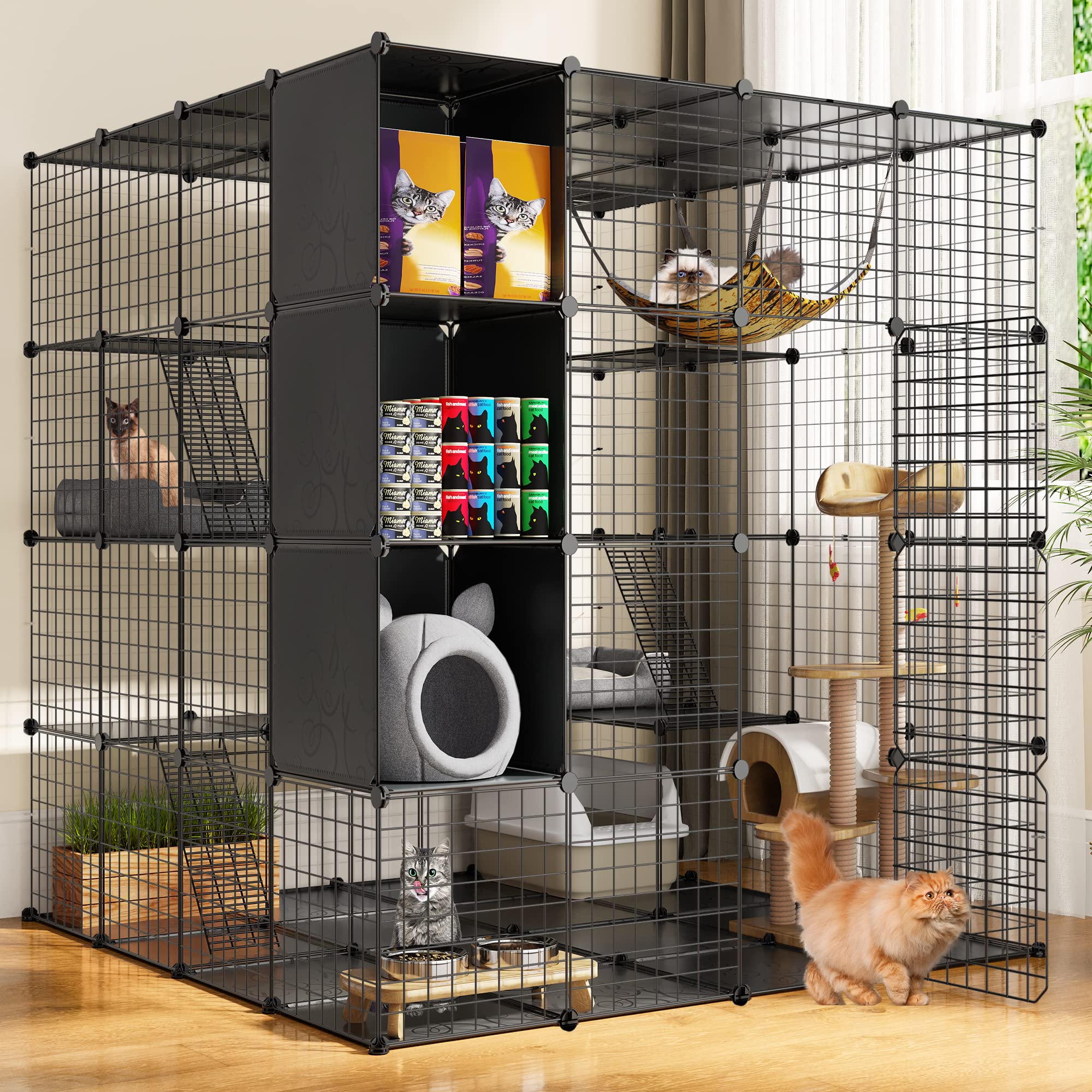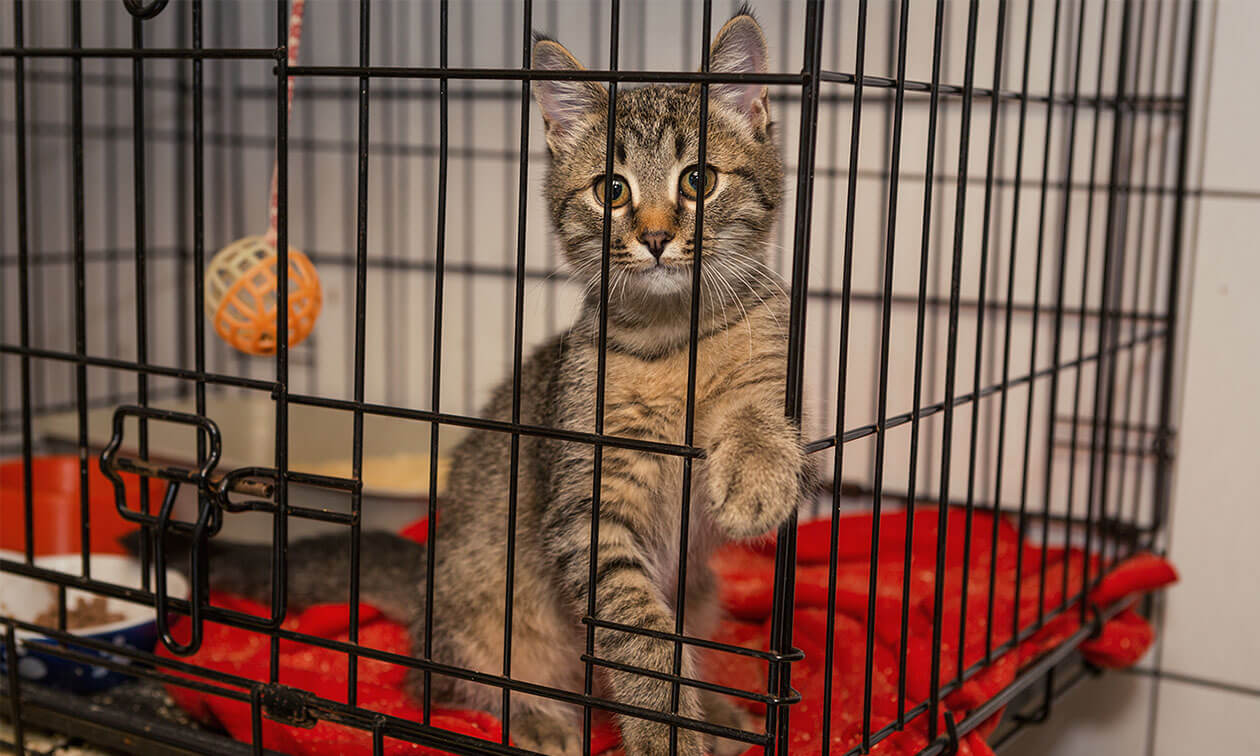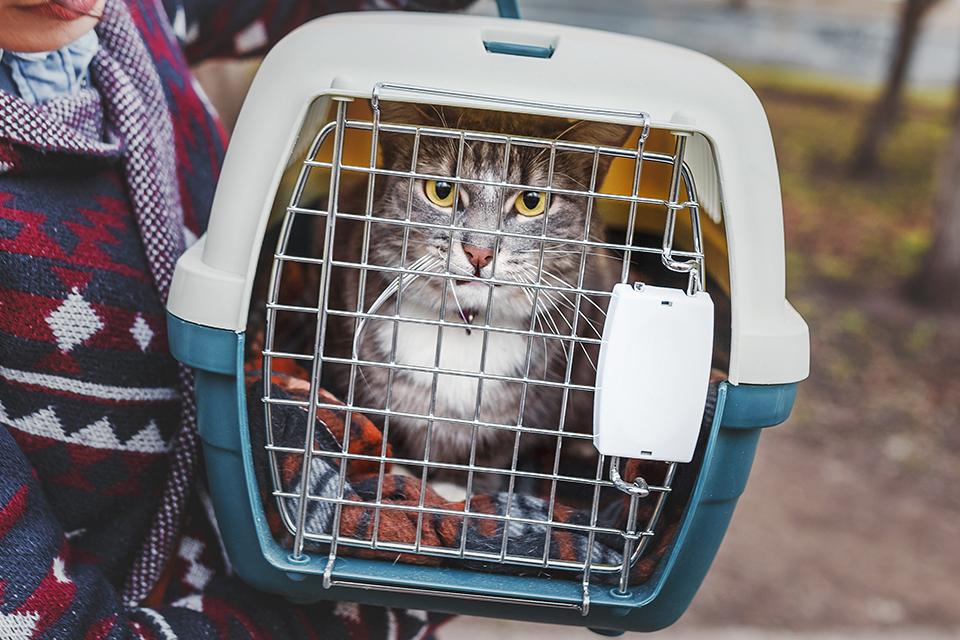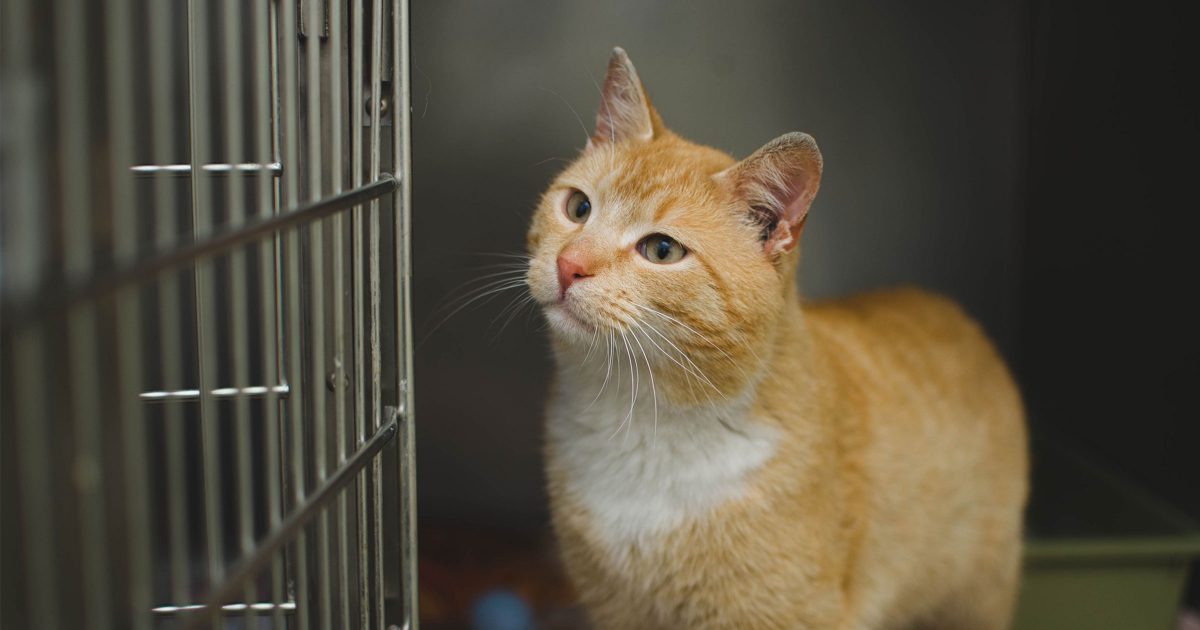In the realm of pet care, cat cages serve as a versatile tool for a variety of purposes, from providing a safe haven during travel or emergencies to offering a temporary confinement space for training or medical reasons. However, it is crucial to approach the use of cat cages with a mindful understanding of feline behavior and well-being, ensuring that these enclosures become a source of comfort and security rather than a cause of stress and anxiety.





Understanding the Emotional Impact of Cats in Cages
Cats are inherently independent creatures, accustomed to roaming freely and exploring their surroundings. Confinement in a cage can disrupt their natural instincts and potentially trigger feelings of stress, anxiety, and even fear. It is essential for cat owners to recognize the signs of distress in their caged companions and implement strategies to minimize discomfort and promote a sense of well-being.
Recognizing Signs of Stress in Caged Cats
Common signs of stress in caged cats include:
- Excessive pacing or restlessness
- Hiding or withdrawing from interaction
- Loss of appetite or changes in litter box habits
- Vocalization such as meowing, yowling, or hissing
- Destructive behaviors like scratching or chewing
Minimizing Stress and Promoting Well-being for Cats in Cages
To alleviate stress and promote well-being for cats in cages, consider these measures:
- Choose an appropriately sized cage that allows the cat to move around comfortably, stretch, and engage in basic activities.
- Provide plenty of ventilation to ensure fresh air circulation and prevent stuffiness.
- Incorporate soft bedding, scratching posts, and toys to create a stimulating and enriching environment.
- Schedule regular interaction and playtime to prevent boredom and loneliness.
- Maintain a consistent routine and schedule to provide a sense of predictability and security.
Selecting the Right Cat Cage: A Guide for Cat Owners
When selecting a cat cage, consider the following factors:
- Size: The cage should be large enough for the cat to stand up, turn around, and stretch out comfortably.
- Material: Choose a durable material that is easy to clean and disinfect.
- Door style: Select a door that opens easily and securely to allow for safe access.
- Ventilation: Ensure adequate ventilation to prevent stuffiness and overheating.
- Features: Consider additional features like shelves, ramps, or litter boxes.
Creating a Positive and Enriching Environment for Cats in Cages
Transform the cat cage into a positive and enriching space by:
- Providing stimulating toys that rotate regularly to maintain novelty.
- Offering opportunities for interaction with family members or other pets.
- Maintaining a consistent routine with regular feeding, playtime, and cleaning schedules.
- Ensuring a comfortable and safe sleeping area with soft bedding and a quiet location.
Understanding the Psychological Effects of Confinement on Cats
Prolonged confinement in a cage can have negative psychological effects on cats, including:
- Increased stress and anxiety
- Frustration and boredom
- Learned helplessness
- Social withdrawal and aggression
Balancing Confinement with Exercise and Enrichment
To mitigate the negative impacts of confinement, balance it with ample exercise and enrichment opportunities:
- Provide daily playtime outside of the cage to allow for exploration and exercise.
- Engage in interactive games to stimulate the cat’s mind and body.
- Rotate toys regularly to prevent boredom and maintain interest.
- Offer opportunities for climbing, scratching, and exploring to satisfy natural instincts.
Special Considerations for Kittens and Shy Cats
When using cages with kittens or shy cats, consider these additional tips:
- Kitten cages: Choose a smaller cage with appropriate bedding, toys, and a litter box.
- Shy cats: Introduce the cat to the cage gradually, providing positive reinforcement and treats.
- Positive reinforcement: Use rewards and praise to build trust and encourage positive associations with the cage.
Utilizing Cat Cages Effectively and Responsibly
Effective and responsible cat cage use involves:
- Avoiding unnecessary confinement: Only use the cage when absolutely necessary.
- Gradual acclimation: Introduce the cat to the cage gradually, allowing them to explore at their own pace.
- Monitoring behavior: Closely observe the cat’s behavior and provide veterinary care if signs of distress persist.
Ethical Considerations and Animal Welfare
Prioritize animal welfare by:
- Ensuring the cage meets the cat’s basic needs and promotes well-being.
- Avoiding prolonged or excessive confinement.
- Prioritizing the cat’s physical and mental health.
-
Seeking Professional Guidance
Cat behavior can be complex, and there may be situations where a cat exhibits persistent signs of distress or anxiety within a cage. In such cases, it is crucial to seek professional guidance from a veterinarian or animal behaviorist. These qualified professionals can assess the situation, provide personalized recommendations, and suggest alternative strategies for managing feline behavior that prioritize the cat’s welfare.
-
Additional Considerations for Cat Cage Use
Beyond the core principles discussed above, here are some additional factors to consider when using cat cages:
- Travel cages: When selecting a travel cage, prioritize portability, durability, and ventilation. Ensure the cage complies with airline regulations if air travel is involved.
- Multiple cat households: If you have multiple cats, assess the situation to determine if a single large cage or separate cages are more suitable. Consider the cats’ personalities and their history of cohabitation.
- Medical conditions: If your cat has a medical condition, consult your veterinarian to determine if cage confinement is necessary and for how long. They can also advise on any specific cage modifications or accommodations needed for your cat’s well-being.
- Cleaning and sanitation: Regularly clean and disinfect the cat cage to maintain hygiene and prevent the spread of germs or parasites. Choose cleaning products that are safe for cats and avoid harsh chemicals.
-
Alternatives to Cat Cages: Exploring Other Options
Cat cages serve a valuable purpose in certain situations, but they are not always the only solution. Here are some alternative strategies to consider depending on the specific need:
- Cat carriers: For short-term transportation needs, a sturdy and comfortable cat carrier can be a suitable alternative to a cage. Choose a carrier with ample space for the cat to turn around and lie down comfortably.
- Gated rooms or enclosures: If confinement is necessary for longer periods, creating a designated “safe room” for the cat can provide more space and freedom of movement compared to a cage. Ensure the room is escape-proof and includes all the cat’s necessities like food, water, litter box, bedding, and scratching posts.
- Positive reinforcement training: Addressing behavioral issues like scratching or using furniture inappropriately can often be resolved through positive reinforcement training techniques. Reward desired behaviors and redirect unwanted ones with patience and consistency.
- Feliway diffusers: These diffusers release synthetic feline pheromones that promote feelings of calmness and security in cats. They can be a helpful tool in managing stress and anxiety, particularly in situations where confinement might be unavoidable.
-
Conclusion: A Partnership Built on Trust and Understanding
Ultimately, responsible cat ownership hinges on building a strong foundation of trust and understanding with your feline companion. By prioritizing the cat’s needs, providing a stimulating and enriching environment, and minimizing unnecessary confinement, cat owners can ensure their furry friends feel safe, secure, and loved, even when a cage is temporarily necessary. Remember, cages are a tool, and like any tool, their effectiveness is contingent upon proper use and a deep respect for the animal’s well-being.